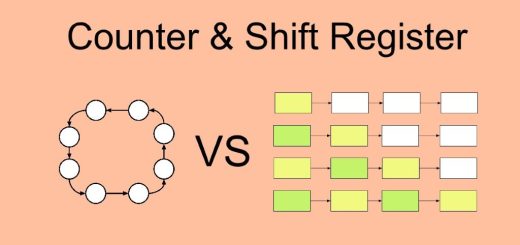Implementing AI-driven Virtual Shopping Assistants to Guide Customers Through Their Online Shopping Journey
Online shopping has exploded in popularity over the last decade. The convenience and selection offered by e-commerce stores like Amazon and Walmart have led to more and more people choosing to shop from the comfort of their homes. However, the online shopping experience still has some pain points. Customers can feel overwhelmed by the vast product selection and struggle to find what they seek. That’s where virtual shopping assistants come in.
Powered by artificial intelligence, virtual shopping assistants act as personalized guides to support customers throughout their online shopping journey. They enhance the experience by providing tailored product recommendations, answering questions, and simplifying purchases. As technology improves, these AI-powered assistants have the potential to revolutionize online shopping.
The Evolution of Virtual Shopping Assistants
The concept of a virtual or digital shopping assistant dates back to the early 2000s. Retailers experimented with basic tools like chatbots to engage customers. The capabilities of these early systems were limited. Conversations were rigid and they could only provide basic information about products.
The rapid advancement of AI over the last decade has led to much more sophisticated virtual shopping assistants. They can now understand context and intent using natural language processing and machine learning algorithms. This allows for natural, conversational interactions.
For example, the North Face shopping app has an AI shopping assistant named Sam. Customers can ask Sam, “What jacket is best for hiking in cold weather?” Sam can interpret this inquiry, analyze product information and customer reviews, and provide tailored recommendations.
AI assistants blend features like:
- Conversational interfaces – Customers can communicate with them via text or voice.
- Recommendation engines – They suggest products based on individual customer data.
- Search functionalities – They can find products based on natural language queries.
- Order tracking – They give updates on order status and delivery.
This combination enables immersive, personalized shopping experiences that weren’t possible just a few years ago.
Benefits of AI-Driven Virtual Shopping Assistants
Implementing an AI-powered virtual shopping assistant offers a variety of benefits:
Enhanced Customer Experience
The main advantage is an improved customer experience. Shoppers today expect personalized service. Virtual assistants fulfill that need by:
- Providing customized product suggestions based on individual preferences and data
- Answering questions quickly 24/7 through conversational interfaces
- Anticipating customer needs and addressing pain points
- Simplifying purchases and post-purchase interactions like order tracking
By replicating human interactions, AI assistants guide customers seamlessly through the shopping journey.
Increased Sales
Studies show that 95% of shoppers are more likely to become repeat customers when offered excellent service. AI assistants boost sales by delivering that level of individualized support.
They encourage purchases by recommending products that align with customer interests. During the shopping process, they can also upsell complementary or higher-end items.
After a sale is complete, AI tools promote brand loyalty by handling post-purchase interactions and issues. Happy customers will return to make more purchases.
Improved Marketing Efforts
The data collected by AI shopping assistants provides invaluable insights into customer behavior and preferences. Retailers can analyze this information to better target and personalize their marketing.
For example, they may discover that customers repeatedly ask about a certain product feature. This indicates an opportunity to create content focusing on that topic. The AI assistant can also automatically collect feedback through conversations that highlight strengths, weaknesses, and areas of improvement.
Enhanced Operational Efficiency
AI tools alleviate the need for large customer service teams. Bots can handle the high volume, repetitive inquiries that human agents find tedious. This allows customer service staff to focus on addressing more complex issues and providing a human touch when needed.
They also integrate with back-end retail systems like inventory databases. Rather than customer service agents having to manually check stock levels, the bot can instantly provide inventory availability and expected delivery timelines. This simplifies workflows.
Competitive Differentiation
As virtual shopping assistants become more common, they will shift from a novelty to an expectation. Retailers that fail to implement AI tools will fall behind the competition. On the flip side, offering an AI assistant provides a way for brands to distinguish themselves.
Customers will flock to retailers that provide excellent, customized service through AI assistants. They drive loyalty and sales.
Key Steps for Implementing an AI Shopping Assistant
Developing a robust AI-powered virtual shopping assistant takes careful planning and execution. These are key steps to implementation:
Set Goals and Identify Use Cases
Begin by defining the goals you want to achieve with the AI assistant. Improving customer service? Increasing sales? Enhancing marketing? The goals should align with overall business objectives.
Then, identify specific high-value use cases like providing product recommendations, simplifying the purchasing process, or offering technical support. Focus the initial launch on a few core capabilities.
Build the Foundation with a Chatbot
Most virtual shopping assistants leverage conversational chatbot technology. The chatbot provides the foundation for interactions. Though you can start with basic pre-scripted dialogs, plan for more advanced natural language processing capabilities.
Decide whether you want text-based or voice-enabled interactions. Voice (powered by speech recognition software) offers more natural conversations but text may be preferable for complex product questions. You can also enable both communication methods.
Develop Data Infrastructure
An AI shopping assistant is only as smart as the data it can access. You need robust data pipelines, clean datasets, and structured product information.
The assistant should integrate with your product catalogs, inventory databases, customer relationship management systems, and other data sources. Web scraping can compile additional product info and reviews from websites.
It’s critical to have comprehensive product details – features, specifications, images, pricing, etc. You also need customer data like browsing history and purchase records to power personalized recommendations.
Implement AI Capabilities
AI capabilities transform a basic chatbot into an intelligent virtual shopping assistant. Here are some key features to implement:
- Natural language processing – This allows the assistant to comprehend language, extract meaning, and respond appropriately. Build an NLP model using customer conversation data.
- Recommendation engine – Use collaborative and content-based filtering to suggest relevant products aligned with an individual’s preferences and purchase history.
- Image recognition – Enable the assistant to identify products from images and make recommendations. Useful for purchases inspired by social media or other visual content.
- Sentiment analysis – Detect the emotional tone in customer messages to gauge satisfaction and pain points. This provides feedback to improve the shopping experience.
- Inventory integration – Connect the assistant to inventory databases so it can provide real-time product availability and order status.
Personalize the Experience
The assistant should evolve based on interactions with each customer to foster relationships and provide tailored service. Chatbot conversations and product suggestions should adapt to individual needs over time.
Personalization also involves using data like purchase history to recommend routine replenishment product reorders. The assistant becomes more helpful in anticipating customer needs.
Optimize Interactions with Machine Learning
The capabilities of AI shopping assistants improve over time through machine learning. As the assistant interacts with more customers, ML algorithms constantly tune NLP models and recommendation engines.
Enable the assistant to learn from every conversation and product search. Analyze logs of customer interactions to identify areas for improving responses and recommendations.
Implement Across Channels
Make your AI shopping assistant accessible across the channels where customers browse, research, and buy:
- Website – Integrate a chatbot widget or voice assistant into your ecommerce site.
- Mobile app – Add conversational commerce functionality into your iOS and Android apps.
- Smart speakers – Enable voice-based shopping via Alexa, Google Assistant, etc.
- Messaging apps – Allow customers to interact with the assistant via SMS, Facebook Messenger, WhatsApp, etc.
- In-store – Provide associates with a mobile app linked to the AI assistant to assist in-store shoppers.
The key is making the assistant available anywhere customers want to engage with your brand.
Plan for Ongoing Improvement
View launching the AI shopping assistant as just the beginning. Set aside resources to assess performance and identify areas to enhance capabilities continually.
Actively seek customer feedback through surveys and reviews. Monitor key metrics like sales influenced by the assistant. Leverage insights to improve the tool and optimize impact.
Key Considerations and Challenges
While AI shopping assistants provide immense benefits, retailers need to be aware of some key considerations and implementation challenges:
Investment Required
Creating an AI assistant requires significant investment. You need data infrastructure, software development resources, and the right AI/NLP skills. Work with reputable vendors to leverage pre-built frameworks that can accelerate development.
Data Challenges
As noted, an AI assistant is useless without quality data. Many retailers struggle with scattered siloed data and incomplete product information. You may need to overhaul data practices to prepare datasets to power AI algorithms.
Balancing Automation and Human Interaction
Even the most advanced AI still has limitations. Automation should not fully replace human interaction and assistance. The goal is to blend AI and people to provide the best overall shopping experience. Carefully determine the hand-off points between bot capabilities and customer service agents.
Measuring Performance
It can be challenging to quantify the impact of AI assistants. Go beyond typical metrics like sales. Consider customer satisfaction scores, service request volume changes, and other measures to prove the business value.
Integration Complexity
Interfacing an AI assistant with multiple backend systems like your product catalog, CRM, and inventory database can be complicated. Poor integration leads to limited capabilities. Having IT/developer support is crucial.
Ongoing Iteration
Plan for constant enhancement of the capabilities and performance of the AI assistant. The algorithms, NLP, and user experience need continuous tuning and refinement. Customer expectations will also evolve over time.
The Future of AI Assistants for Shopping
The technology behind virtual shopping assistants will continue advancing rapidly. Looking 5 to 10 years ahead, here are some emerging capabilities we may see:
- Predictive assistance – Assistants may begin anticipating customer needs before they even ask. For example, proactively notifying customers that their favorite coffee is on sale.
- Augmented reality – Customers could interact with virtual products in AR when browsing the online store. They could visualize furniture in their home, try on clothing virtually, and more.
- Expanded product research – Assistants may utilize the internet and other information sources to provide comprehensive product research well beyond a retailer’s own catalog.
- Multilingual support – With advances in translation, AI assistants will be able to smoothly interact with customers in languages other than English.
- Enhanced personalization – Assistants will leverage more dimensions of customer data like browsing history across devices and demographic info to hyper-personalize interactions.
- Cross-channel experience – Instead of siloed website/app experiences, assistants will be able to pick up conversations across different channels and devices.
- Integration into smart home devices – Assistants may be built into smart home hubs and screens to enable frictionless shopping via conversational interfaces.
The goal is making assistants indistinguishable from human interactions. Getting to that point requires relentless focus on enhancing AI and continuously aligning capabilities to customer needs.
Key Questions
What types of data does an AI shopping assistant need?
In order for an AI shopping assistant to provide personalized recommendations and natural conversations, it requires extensive quality data. This includes customer data, product data, content data, and conversation logs. Customer data includes purchase history, demographics, and communication preferences, while product data includes pricing, features, and inventory levels. Content data comprises product ratings, reviews, and Q&As, and conversation logs are used to train NLP models.
How much does it cost to implement an AI shopping assistant?
Costs vary based on scope and capabilities, but budget at least $100K to $300K for a robust implementation. This covers the AI software, NLP development, integrating with backend systems like your CMS and CRM, and ongoing optimization. Work with an AI consultant to determine budget based on your specific objectives and needs.
What role do human agents play if the assistant handles most routine customer inquiries?
AI assistants handle high volume, repetitive interactions like order status lookups and product questions. But human agents are still critical for complex issues, escalations, and providing a human touch. Focus agents on building relationships through high-value interactions while AI handles the more mundane tasks.
What risks or disadvantages come with implementing an AI shopping assistant?
To deliver a successful AI-powered assistant, businesses must be mindful of key risks such as poor customer engagement, limited capabilities, and misaligned AI investments. To mitigate these risks, businesses should adopt an approach of extensive testing, start small, and solicit customer feedback. Additionally, it is important to ensure that human oversight is present at key touchpoints to avoid over-automation.
How can I benchmark the success of my AI shopping assistant?
Track customer satisfaction scores, sales influenced by AI, reduction in service requests, lower product return rates, higher retention, reduced cart abandonment, and higher spend from repeat customers. Analyze metrics over 6+ months to compare performance before and after AI implementation.
Conclusion
Implementing an AI-powered virtual shopping assistant requires upfront investment but provides immense long-term payoff through improved customer experiences and business performance. As technology advances, AI-driven assistants will shift from novelties to baseline expectations for online retailers.
Revolutionizing e-commerce supply chain operations, retailers leverage the power of AI by adhering to best practices in goal-setting, establishing robust data pipelines, implementing strategic AI capabilities, and embracing omnichannel deployment. Through continuous optimization, they transform shopping assistants into ever-evolving platforms, ensuring sustained enhancement rather than treating them as one-off projects, thereby maximizing the genuine value delivered to customers.
With a thoughtful approach and commitment to delivering personalized, conversational shopping journeys, AI assistants can transform how customers interact with your brand online. The result is happier, loyal customers that drive growth.












